The safety of the driver and passengers in the car directly depends on the brake fluid. A sharp drop in the level of the brake fluid is fraught with extremely unpleasant consequences. When the brake fluid drop is dropped below the minimum marker, the safety of the driver and passengers is threatened. Although in the modern car and there is a sensor tracking level of brake fluid, completely relying on electronics is still not worth it, it is recommended to periodically check its level visually.
Content
Brake fluid level, which level is normal
Checking the level of the brake fluid is quite simple. Under the hood of the car there is a special tank under it. Most often a tank for the brake fluid is made of translucent plastic. Directly with the side of the tank there are two labels "MAX" and "MIN" located at different levels. The level of brake fluid in the tank must be between these marks. Some motorists recommend maintaining the level of brake fluid along the upper "maximum" mark.
Important! Before checking and plotting the brake fluid into the car, it is strongly recommended to read the instructions for it. Since some manufacturers of vehicles equipped with anti-lock system "ABS", before checking and plotting the brake fluid require "pumping" brakes.
If, when checking the level of the brake fluid, a large loss has been revealed. In no case is not allowed to operate the car until the cause of the cause of the loss of the brake fluid and its elimination is allowed. Since the loss of brake fluid during operation can increase, and as a result, cause refusal for emergency braking. Passing both the driver and passengers of this vehicle and other road users.

The cause of brake fluid care
The causes of the loss of the brake fluid in the car system can be diverse.
Let us analyze the main causes of fluid loss in the brake system in detail.
leave brake fluid, crack in a tank, driver actions
In case of detection when examining the loss of a large amount of brake fluid. Do not immediately begin to disassemble the entire brake system of the car. First of all, it is necessary to make a thorough visual inspection of the tank directly with the brake fluid. About the crack or damage to the tank will speak a characteristic wet trail and drums.
Important! In case of damage, the barrel from the brake fluid in some cases can be repaired, but it is still better to produce its full replacement to the new one. Since the sealed crack can run again at any time.
the brake fluid is leaving, brake cylinder drip, driver action
If the reason for the loss of the brake fluid is not in a damaged tank, look at the next step directly under the car. In the case of a long downtime of the car during damage to the brake cylinder, the characteristic stains of the brake fluid will remain under it.
Finding a stain from brake fluid under the car. It is necessary to find out the exact reason for its appearance. To identify damage to brake cylinders, act in the following sequence:
- Remove the wheel;
- Carefully visually inspect the brake disc;
- Check the calipers for the subject;
- We do the same with the second wheel.
- In the event that drum brakes are installed on the rear wheels, remove them and also inspect.
Important! The rear brake cylinders are usually associated with the wear or quality of special rubber seals. In particular, this is relevant for residents of the northern regions in severe frosts. Since rubber seals at low temperatures lose their elastic properties.
there is a brake fluid, not a density in the brake hose, the actions of the driver
The cause of the loss of brake fluid in the car can also serve the brake hose. Its inspection is made visually for the objects. Normal not damaged brake hose must be dry.
Also, when inspecting the brake hose, it is recommended to touch with your hands, bend and try to surpassed it. If the brake hose is solid, has drips and covered with small cracks when squeezed and bending. It is recommended to replace it.
Important! It often happens that the brake hose elementally flies from the fitting. This problem is solved simply, the hose dresses in place and is delayed by a special holding clamp.
the brake fluid goes, the main brake cylinder is faulty, the driver's actions
In addition to the current causes of the loss of the brake fluid. It can occur due to damage to the main brake cylinder "GTC", namely its rubber seals.
Frames are formed in rubber seals, through which the brake fluid is composed.
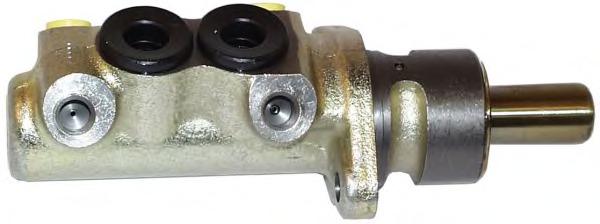
Moreover, the lack of drills does not mean the health of the main brake cylinder, as the brake fluid can go directly into the vacuum brake amplifier. This fault is detected only with the removal of the main brake cylinder and detecting the inclusions inside the redemption amplifier. In the event of this problem, the main brake cylinder is subject to a complete replacement.
Important! This problem can be eliminated by the replacement of rubber seals, but the specialists strongly recommend that the main brake cylinder is fully replaced.
Pumping brake system after repair
Upon completion of the repair work associated with the braking system, it is necessary to produce it pumping. This can be done both independently and contact a specialized car service. Pumping the brake system is an extremely simple process, which is completely under the power of each car owner, but for this you need a partner, whose task will be pressed on the brake pedal at the right moment. The role of a partner may even take on even a child.
To pump the brake system, we will need:
- Small capacity;
- Brake fluid;
- Small hose under the fitting.
And so, finding a partner and prepare everything you need, produce a pumping of the brake system in the following sequence:
- Pour the brake fluid into the tank to the "maximum" mark;
- We clean and wipe the brake fittings of each wheel;
- Pour the brake fluid into a small container;
- Make a cooked hose to the stacker;
- The second end of the hose is lowered into a container with brake fluid;
- We give a team to the partner so that it began to start evenly and intensively press the brake pedal. After the 4th pressing the partner must fix the pedal pressed;
- Slightly turn off the fitting and look at how the brake fluid comes out. The presence of bubbles speaks about the presence of air in the brake system;
- After the air came out, wrap the fitting, and repeat this process on all wheels.
Important! Before pumping the brake system, it is recommended to read the instructions for the car. It should be found out in which sequence it is necessary to pump the wheels. In the absence of this information, you should start from the far wheel to the neighbor, where the final point is the main brake cylinder. As a rule, pumping starts from the rear wheels, first the right next left, then we come to the front in the same sequence.
Professional advice
- The leakage of the brake fluid should be very serious, and in no case exploit the car without it or with a strong flow.
- It should be done regularly check the level of the brake fluid on their own, and not rely on the electronics of the car. It is best to do this together with the inspection of engine oil.
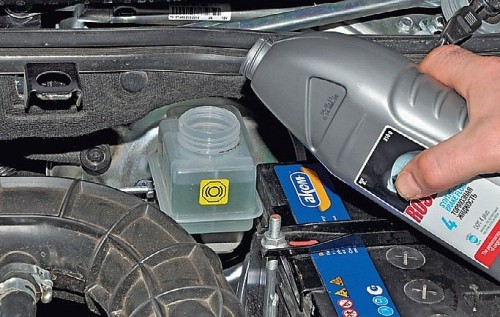
- After completion of the repair work, the brake system should be performed at mandatory. It is not allowed to operate a car with imminent brakes.
- In the event of a malfunction of one or more brake system elements, their complete replacement should be made. This will avoid unpleasant, and somewhere even dangerous consequences while driving.
- We also recommend reading an article on our website. "Curry brakes, why brake creak, how to eliminate the creak".
Related Materials
- Stove 2110, bad warm stove 2110, VAZ 2110 heating system, repairing the heating system VAZ 2110 with their own hands
- VAZ 2114 stove blows with cold air, stove 2114, bad warm stove VAZ 2114, device and repair of heating VAZ 2114 do-it-yourself, removing the stove VAZ 2114
- How to subdominize the car. How to put a jack. Types of jacks for cars.
- VAZ 2109 Fuse Block, VAZ 2109 Fuse Block Carburetor, VAZ 2109 Fuse Block Injector, Old VAZ 2109 Fuse Block, VAZ 2109 Fuse Block, VAZ Fuse Block 2109
- Car exhaust gas catalyst, faulty catalyst, pluses and cons of the catalyst, how to change the catalyst on the planeencitel
- Stove blowing cold air VAZ 2114, badly blowing the stove VAZ 2114, why badly blowing the stove VAZ 2114
- How to find out the owner of the car by the number of his car, check the car by the number of the traffic police machine, check the car by the state number of the car for free
- How to choose Used tires, Useful Tips
- Winter car road, pressure in passenger car tires in winter, good battery for the car in winter, whether to warm the car in winter
- In winter, the car is poorly started. How to make a car in winter, do you need to warm up the car in winter, useful tips
- Economy fuel consumption machines, the most economical car consumption
- Tires brands for passenger cars, labeling of car tire labeling, residual passenger car tire protector, how to pick a tire on a car brand, car tire tread pattern
- Working transmission operation, mechanical gearbox clutch work, driving with manual gearbox, useful tips
- Rear beam Peugeot 206 sedan, rear beam device Peugeot 206. Rear beam Peugeot 206 Malfunction, repair of the rear beam Peugeot 206
- Diesel fuel in winter, additive for diesel fuel in winter, how to choose the best diesel fuel
- Diesel winter does not start. How to start diesel in winter, heating diesel in winter.
- Japanese bridgestone tires, winter studded bridgestone tires, bridgestone tires brand
- Tire marking decoding for passenger cars, labeling wheels, how to choose the right tires on the disks
- Diesel engine in winter, launch of the diesel engine in winter, what oil to fill in a diesel engine in winter, useful tips
- LED backlight of the car, the backlight of the bottom of the car, the backlight of the legs in the car, the backlight in the door of the car, the backlight of the car is fine
- Recovered tires, bus tire, restored tire protector, can I use them
- Choose winter tires, which is a winter tires, which pressure in winter tires should be marked with winter tires, how to choose the right winter tires, the best winter tires 2019
- Steering rail rail, knock of steering rack, reasons for the knock and repair of the steering rack do it yourself
- Cameless car tires, a set for repair of tubeless tires, repair of the cannon-free tire do it yourself
- Russian tires, Russian tires Winter, Russian All-season tires, Voronezh AMTEL tires, Tires "Matador Omsk Tire", Kama-tires are world-class bus
- How to open a car without a key. Lost the key from the car what to do, the key from the car inside the car
- Silent tires, quiet winter tires, quiet studded bus, which tires to choose, overview tires
- Tires and safety, safety of the bus, why it is necessary to constantly monitor car tires
- Rules of safe driving of the car in the rain and slush, safe driving of the car for beginners
- Rust converter which is better for cars, rust converters to choose how to use rust transducer, professionals
- Polishing the body of the car do it yourself, how to choose a polishing paste, useful tips
- Engine durability, engine life, how to extend engine life
- Knock in the car. Knock when moving the car. What can knock in the car. How to determine the cause of the knock.
- ABS car, what is ABS car, ABS system malfunction, ABS diagnostics
- Overtaking a car when you can start overtaking a car, rules of traffic rules
- Fuel pump VAZ 2110, VAZ 2110 gas station scheme, VAZ 2110 fuel pump device, VAZ 2110 gas station repair,
- Automotive antennas for radio, automotive antenna device, car antenna do it yourself
- Front suspension Kalina, device front suspension Kalina, knock in front suspension Kalina, repair of front suspension Kalina
- Shock absorber Oil, best oil shock absorbers, pumping oil shock absorbers, how to properly pump oil shock absorber
- Clutch malfunctions, touches clutch, causes a clutch malfunction, how to eliminate
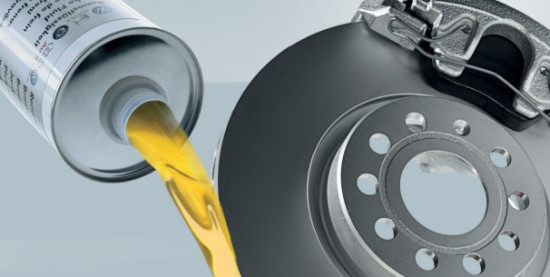
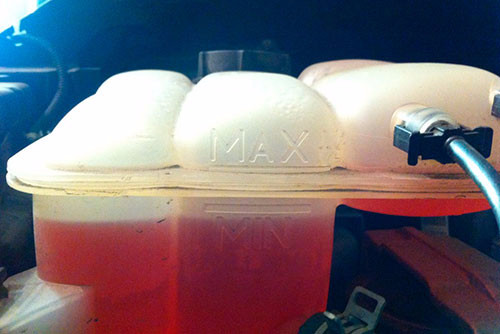
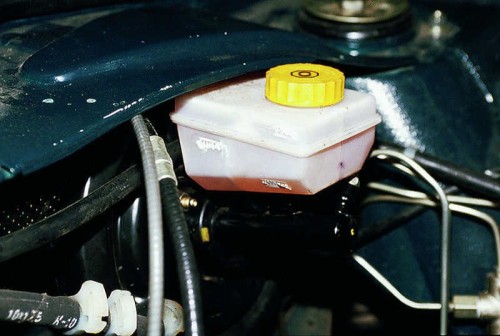
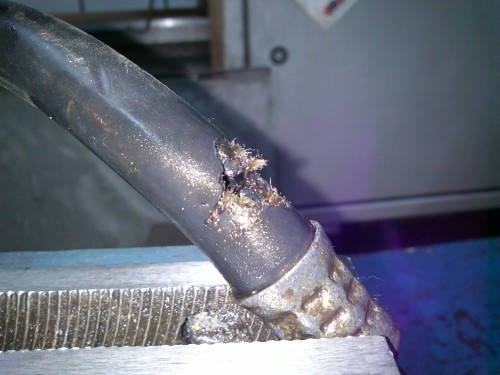
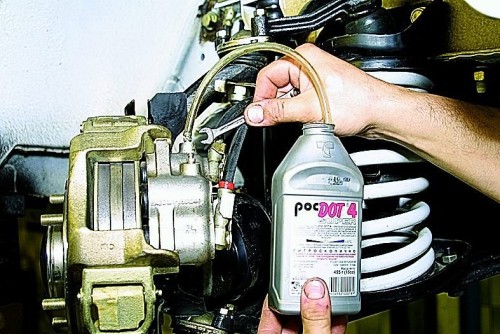






follow the brake system and do everything on time to replace the fluid, although if the brakes are refused, call the tow truck